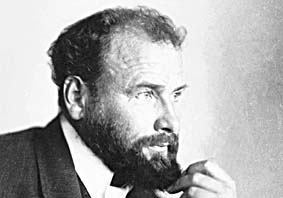Gustav Klimt (Gustav Klimt)

Artist. An Austrian symbolist painter and one of the most prominent members of the Vienna Secession movement, he is noted for his paintings, murals, sketches, and other objets d’art with a focus on the female body. Born the second of seven children, his father was a gold engraver. He attended the Vienna School of Arts and Crafts in Vienna, Austria where he studied architectural painting until 1883. In 1888 he received the Golden Order of Merit from Emperor Franz Josef I of Austria for his contributions to murals painted in the Burgtheater in Vienna. He also became an honorary member of the University of Munich and the University of Vienna. In 1892 his father and brother Ernst both died, and he had to assume financial responsibility for his father’s and brother’s families. The tragedies also affected his artistic vision and soon he would move towards a new personal style. In the early 1890s he met Emilie Louise Floge who, notwithstanding the artist’s relationships with other women, was to be his companion until the end of his life. His painting, “The Kiss” (1907-1908), is thought to be an image of them as lovers. In 1894 he was commissioned to create three paintings to decorate the ceiling of the Great Hall of the University of Vienna. Not completed until the turn of the century, his three paintings, “Philosophy,” “Medicine,” and “Jurisprudence” were criticized for their radical themes and material, and were called “pornographic.” The public outcry came from all quarters; political, aesthetic and religious, and as a result, the paintings were not displayed on the ceiling of the Great Hall. All three paintings were destroyed by the retreating Nazi SS forces in May 1945, in the final days of World War II in Europe. In 1897 he became one of the founding members and president of the Wiener Sezession (Vienna Secession) and of the group’s periodical, Ver Sacrum (“Sacred Spring”), remaining with the Secession until 1908. His other noted works of art include the “Pallas Athene” (1898), “Judith I” (1901), “Beethoven Frieze” (1902), “The Sunflower” (1906), “Portrait of Adele Bloch-Bauer I” (1907), “Death and Life” (1911, which won 1st prize in the world exhibitions in Rome, Italy), and “The Maiden” (1913). After suffering a stroke, he died of pneumonia due to the influenza epidemic that occurred in 1918. In the last 10 years, his paintings have brought some of the highest prices recorded for individual works of art. (bio by: William Bjornstad) Cause of death: Pneumonia/influenza following a stroke
Born
- July, 14, 1862
- Austria
Died
- February, 02, 1918
- Austria
Cause of Death
- Pneumonia/influenza following a stroke
Cemetery
- Hietzinger Friedhof
- Austria

